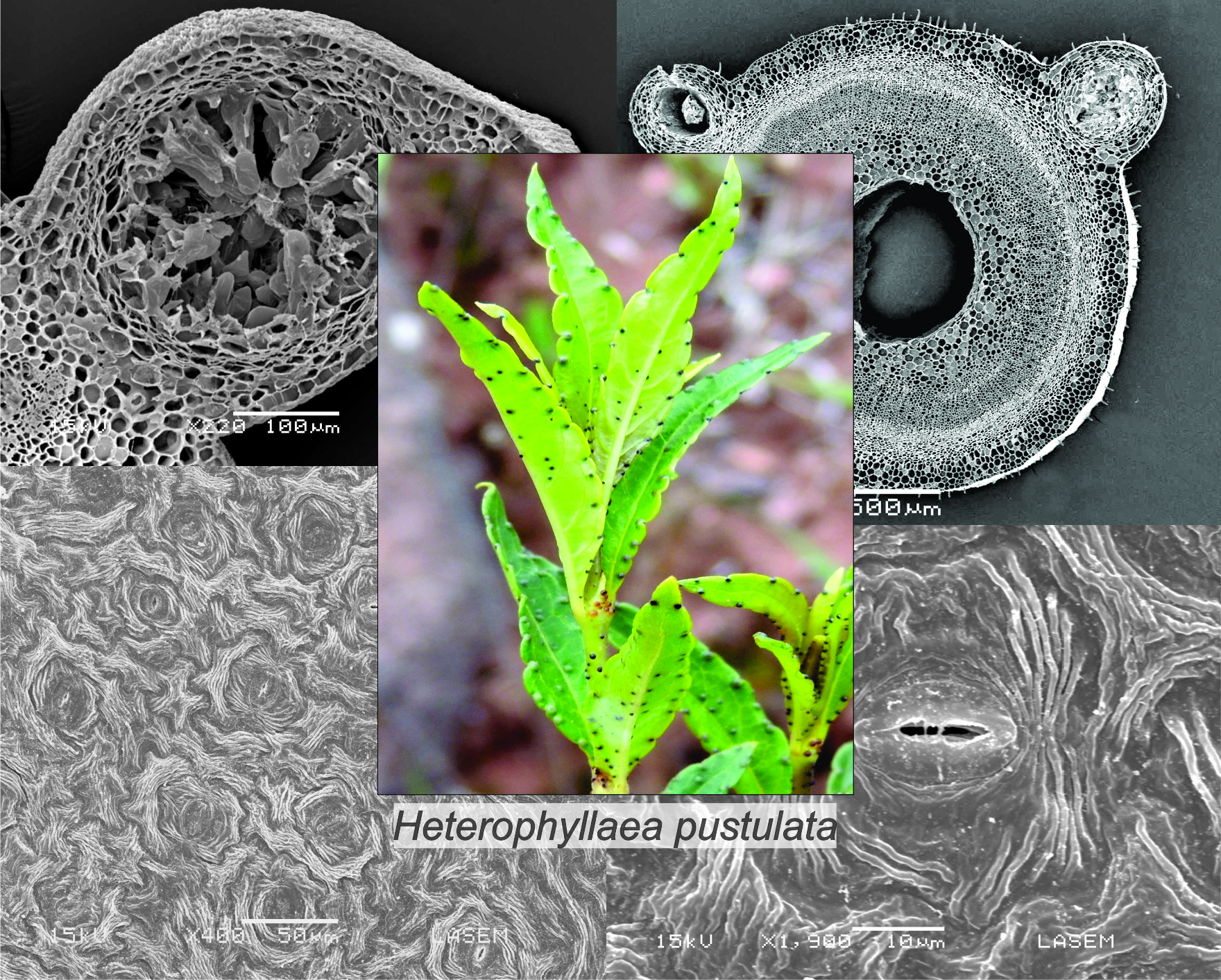Leaf and stem morpho-anatomy of Heterophyllaea pustulata (Rubiaceae)
DOI:
https://doi.org/10.31055/1851.2372.v54.n3.25358Keywords:
Anatomy, lysigenous cavities, druses, toxic plants, raphides.Abstract
Background and aims: Heterophyllaea pustulata (Rubiaceae) grows in northwestern Argentina. It has livestock importance because it produces photosensitization in the cattle that consume it. That is why it is proposed to study the foliar and caulinar morpho-anatomy of the species in order to determine structural characters that facilitate the identification of the plant.
M&M: Leaves and stems of young adult plants and seedlings obtained through in vitro cultures were taken and studied by conventional histological techniques. Images obtained with optical and scanning electron microscopy are presented.
Results: The results indicate that the studied species have morphological and anatomical characters similar to other species of Rubiaceae, although it presents others that were not previously described, such as the structure of the epidermis with striated cuticle and the anatomy of the stem.
Conclusions: It is found that the diagnostic characters that facilitate the identification of the plant are: microdenticulated margin of the lamina, epidermis with striated cuticle in leaves and young stems, simple eglandular trichomes, mesophyll with raphides and druses, in addition to the lysigenous cavities in all the organs of the plant.

Downloads
Published
Issue
Section
License
Provides immediate and free OPEN ACCESS to its content under the principle of making research freely available to the public, which fosters a greater exchange of global knowledge, allowing authors to maintain their copyright without restrictions.
Material published in Bol. Soc. Argent. Bot. is distributed under a Creative Commons Attribution-NonCommercial-ShareAlike 4.0 International license.




